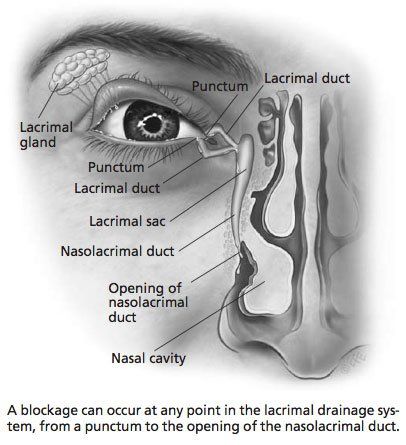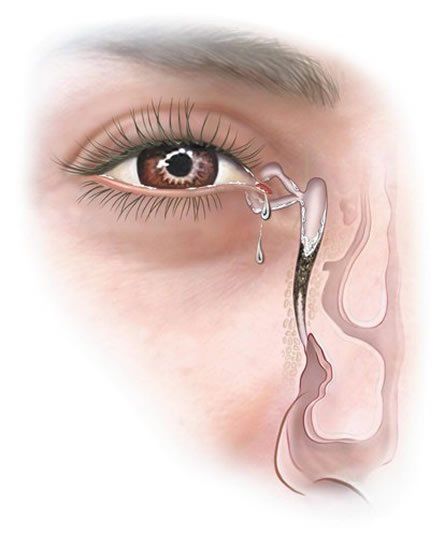Watery eyes, blocked tear ducts and dacryocystorhinostomy (DCR) in adults
Watery eyes can be the result of either an oversupply of tears (often as a compensatory mechanism for dry eyes), or inadequate drainage of tears. The drainage is inadequate when the punctum (the opening of the tear duct) is blocked or misaligned (see ectropion), or if the tear duct itself is blocked. The tear duct usually drains tears to the nose; however, when blocked, the tears spill over and cause a watery eye.

The tear ducts may be blocked for no specific reason. Sometimes the blockage is related to previous trauma such as a broken nose, or medical causes such as nasal allergies or inflammatory disorders.

Examination is required to determine the cause of the watery eye. This involves a "Probe and syringe" washing out the tear ducts with salt water to see if they are blocked, a procedure which is well tolerated by most patients.
Surgery is performed at a day surgery usually under local anaesthetic with sedation. During a dacryocystorhinosotomy (DCR) procedure the blockage is bypassed by opening the lacrimal sac at the beginning of the tear duct where tears collect directly into the nose. This requires the removal of the bone from between the nose and the eye socket that lies between the tear-duct sac and nasal cavity. Silicone tubing is inserted to hold the bypass open as a stent, and removed later in the office.
Illustrations shown are provided courtesy of the Royal Australian and New Zealand College of Ophthalmologists (RANZCO) and Mi-Tec Publishing. The complete RANZCO patient education pamphlet is available from your ophthalmologist



